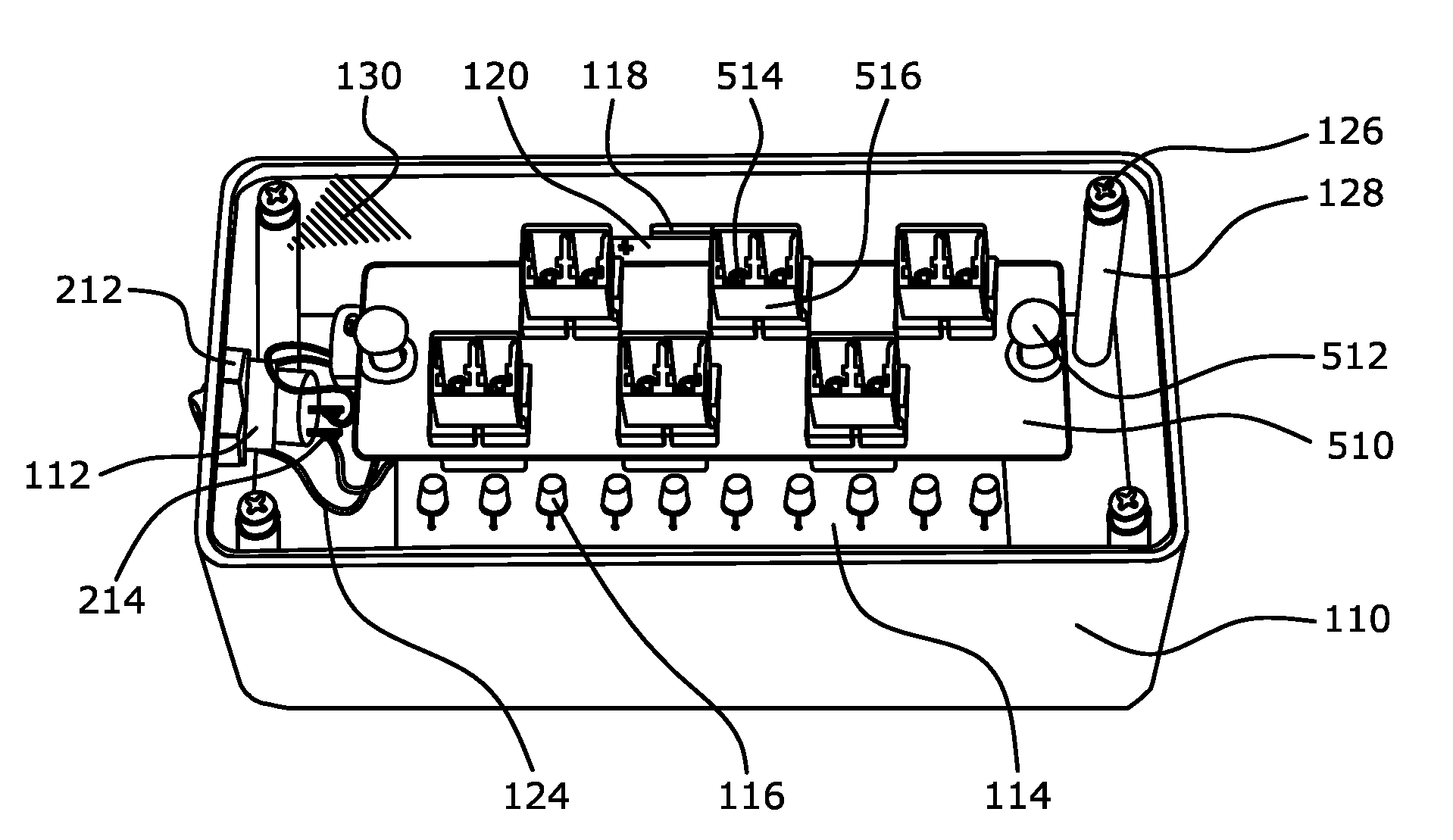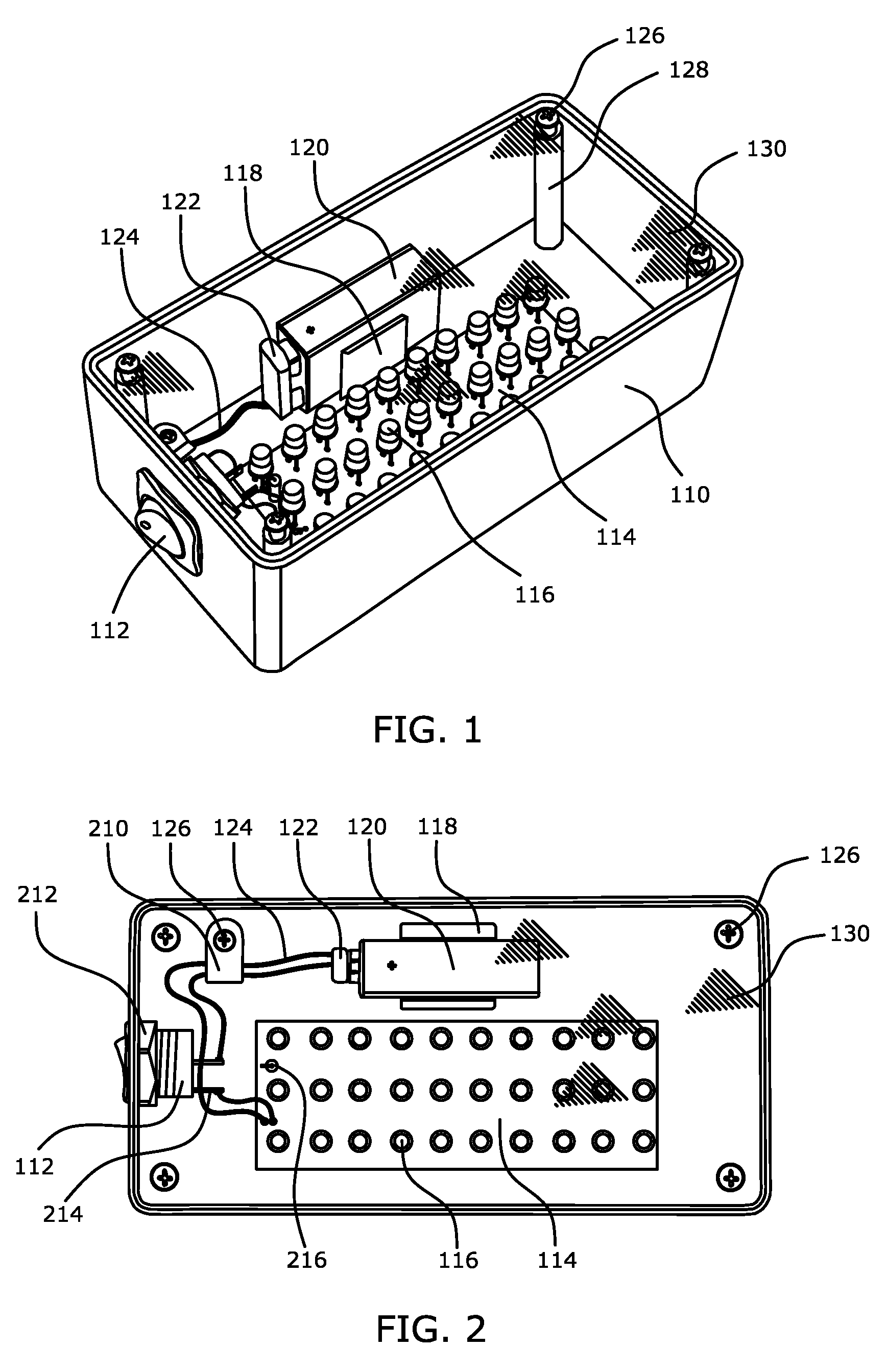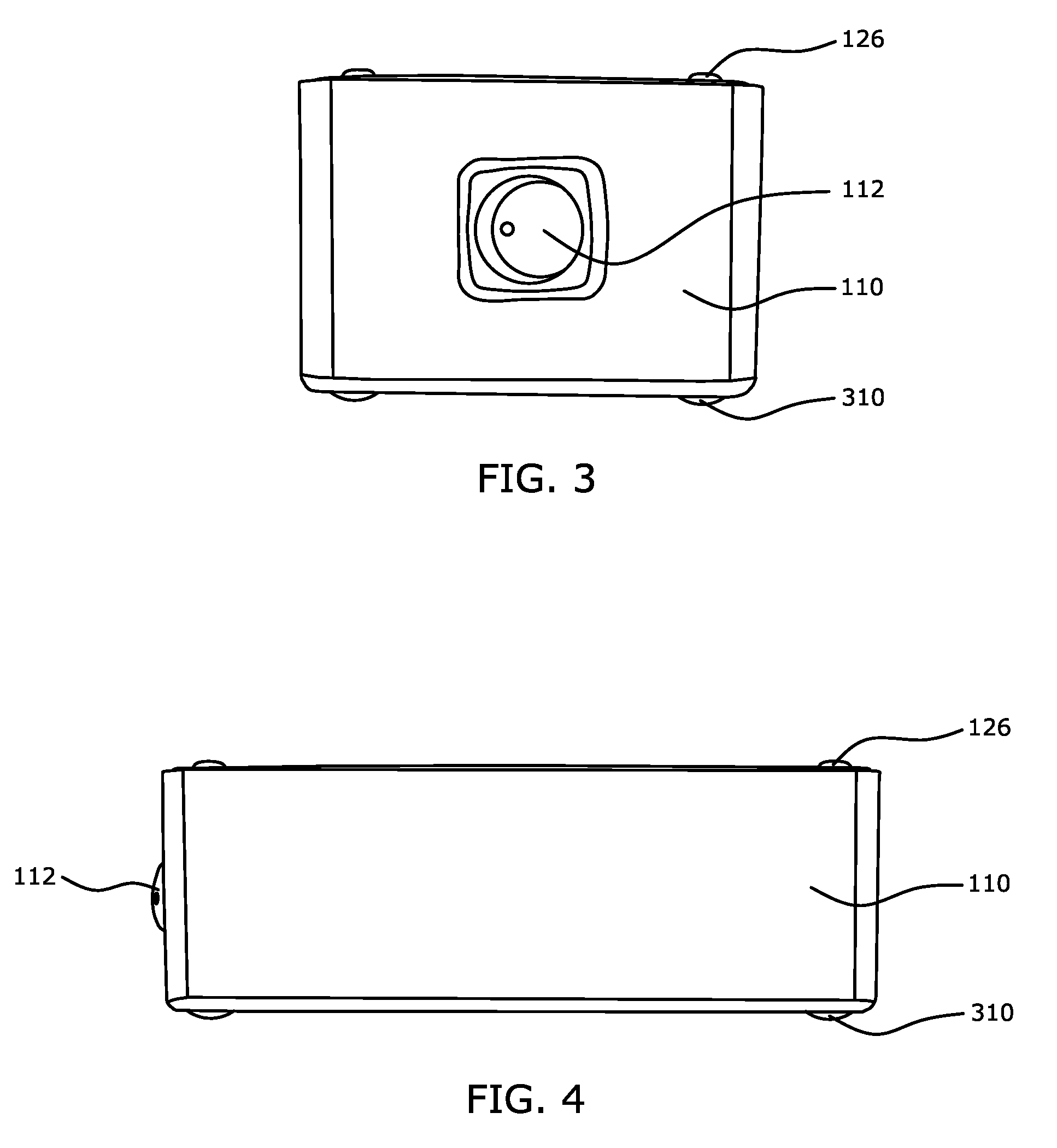Rapid visual fiber optic cable tester
a fiber optic cable and tester technology, applied in the field of fiber optic cable testers, can solve the problems of high cost of optical fiber cable field testing equipment, equipment that requires periodic factory calibration, and time-consuming in high-volume applications
- Summary
- Abstract
- Description
- Claims
- Application Information
AI Technical Summary
Benefits of technology
Problems solved by technology
Method used
Image
Examples
Embodiment Construction
[0053]FIG. 1 shows a perspective view of the rapid visual fiber optic cable tester. Enclosure 110 holds all the components together. Power button 112 is positioned on the side wall of enclosure 110. Circuit board 114 is fixed inside enclosure 110. Each LED 116 (Light Emitting Diode) is mounted in a straight position on the circuit board 114. LEDs 116 are distributed uniformly on the circuit board 114 to provide a uniform visual light pattern through the surface of a transparent screen 130. A total of thirty high intensity LEDs are used to create a basic uniform visual light source in a visible spectrum wavelength range. However, in lieu of LEDs, other light sources can be used as well, such as fluorescent, neon tube, bulb, laser diode, etc. Therefore, there is no limitation for what type and color of light source is used, as long as it is visually sensible.
[0054]Transparent screen 130 in FIG. 1 is located above enclosure 110 and fastened from all corners with screws 126 on support c...
PUM
| Property | Measurement | Unit |
|---|---|---|
| optical continuity | aaaaa | aaaaa |
| wavelength range | aaaaa | aaaaa |
| electrical power | aaaaa | aaaaa |
Abstract
Description
Claims
Application Information
 Login to View More
Login to View More - R&D
- Intellectual Property
- Life Sciences
- Materials
- Tech Scout
- Unparalleled Data Quality
- Higher Quality Content
- 60% Fewer Hallucinations
Browse by: Latest US Patents, China's latest patents, Technical Efficacy Thesaurus, Application Domain, Technology Topic, Popular Technical Reports.
© 2025 PatSnap. All rights reserved.Legal|Privacy policy|Modern Slavery Act Transparency Statement|Sitemap|About US| Contact US: help@patsnap.com



